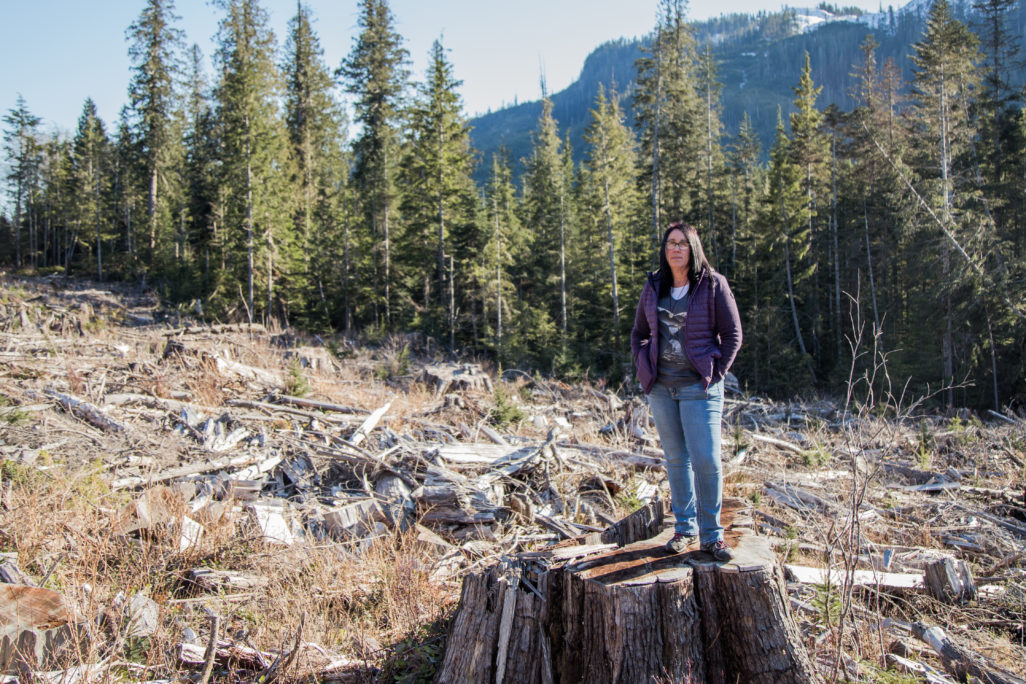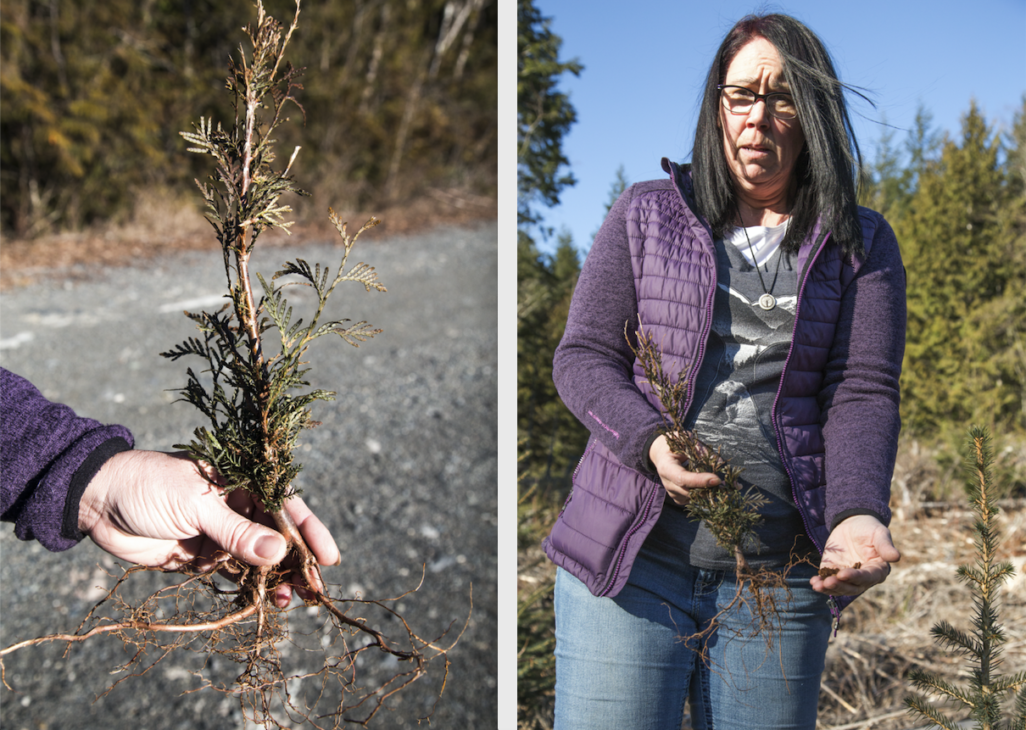
Tlowitsis Guardian Gina Thomas stands on a cedar stump at a Western Forest Products cutblock near Rooney Lake, Vancouver Island. (Serena Renner)
By Serena Renner and Ayesha Ghaffar
An hour northwest of Campbell River, on Vancouver Island, Gina Thomas climbs a giant tree stump. Its diameter is at least five feet wide. The bark bears wavy vertical lines indicating this was once a western red cedar.
A row of old-growth cedar towers in the background. But all around Thomas is a wasteland of wood chips, branches, and stumps.
This site was logged a few years back. The only green in the cutblock is the tiny saplings sprouting from debris.
“The trees they’re planting are Douglas fir,” said Thomas, who runs the local Guardian Watchmen program and has two decades of forestry experience. “These sites are getting too dry for cedar. That means we’re not getting any cedar regenerating here.”
Thomas is from Tlowitsis First Nation. In her culture — like in many coastal First Nations throughout British Columbia — western red cedar is known as “the tree of life.” For thousands of years it’s been used to make homes, clothing, canoes, masks, poles, and much more.
But here, in northeastern Vancouver Island, the tree of life is dying.
Leaves are turning brown. Saplings aren’t making it past their first years. Alarm within leadership has prompted local First Nations to create new policies to protect cedar for future generations.

Gina Thomas holds a dead cedar sapling. She says soil in cutblocks is too dry and nutrient-poor to grow western red cedar, so forestry companies are planting more Douglas fir. (Serena Renner)
(Read the full story, published May 29 2020, and hear the audio version at CBC’s Unreserved.)